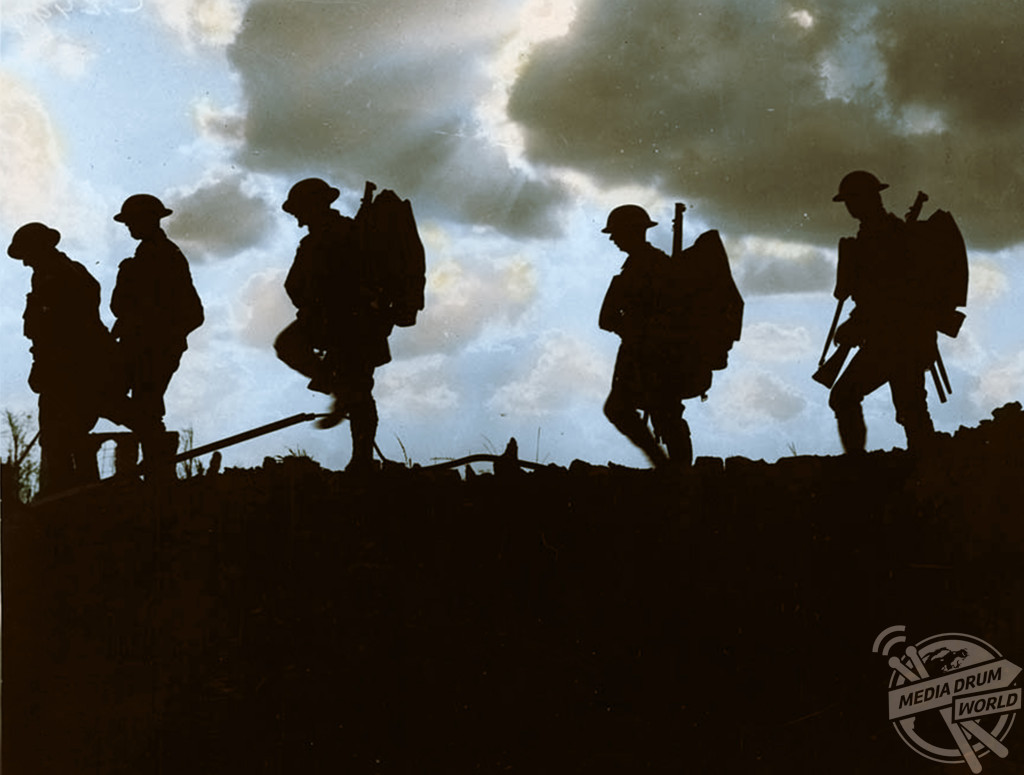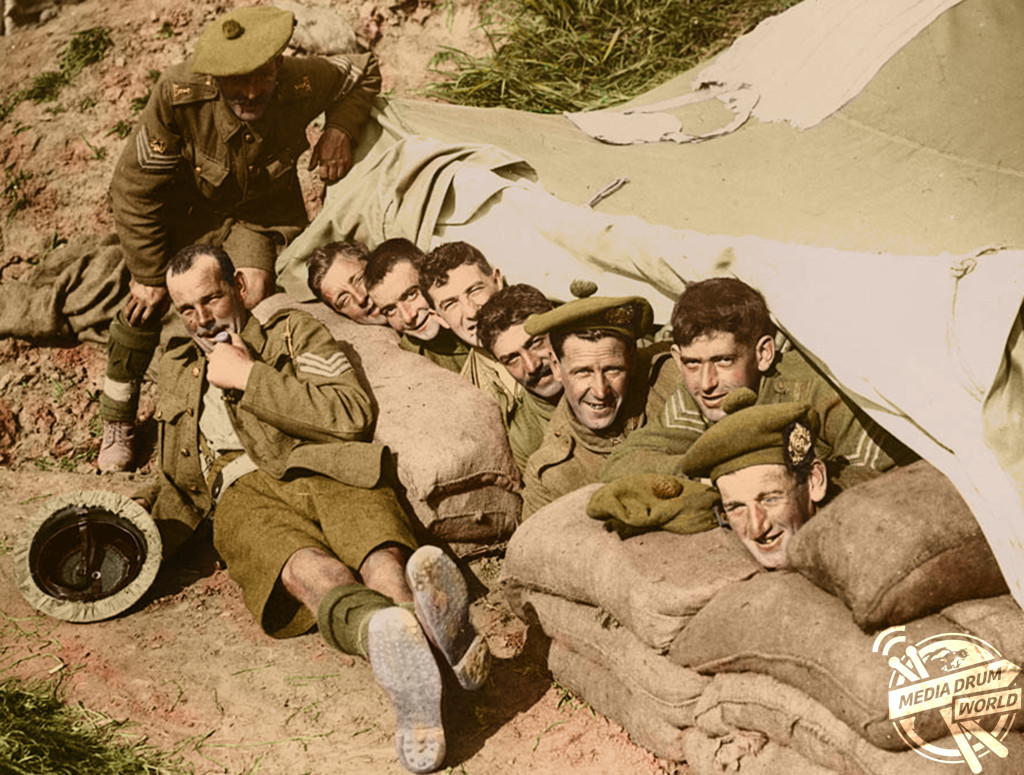By Tom Dare
REMARKABLE IMAGES showing soldiers laughing and joking during the Battle of Passchendaele have been restored into colour to commemorate the centenary of one of the First World War’s most horrific conflicts.
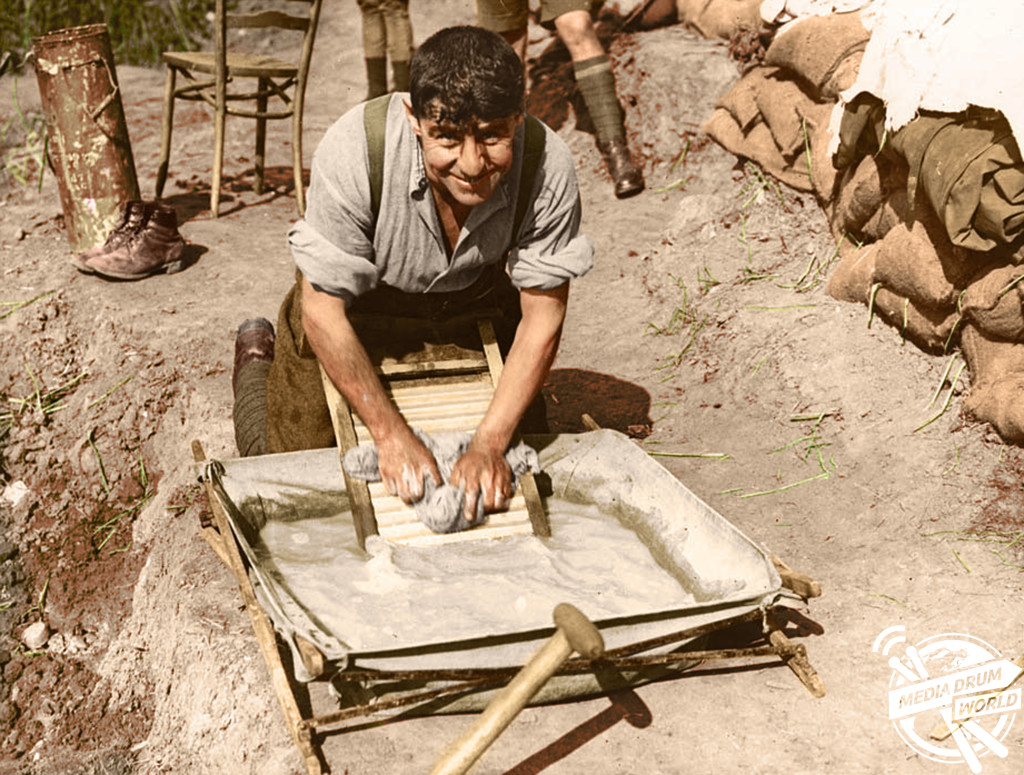
Pictures show soldiers chatting to locals, washing clothes and smiling in the entrance of a German trench during the infamous battle, which claimed the lives of over half a million men between July 31 and November 6.
Soldiers from Britain, New Zealand, Canada and Australia are all shown in the images, which were restored by professional photo colouriser Tom Marshall.
And Tom says he chose this particular set of shots as he wanted people to connect with the men in them.
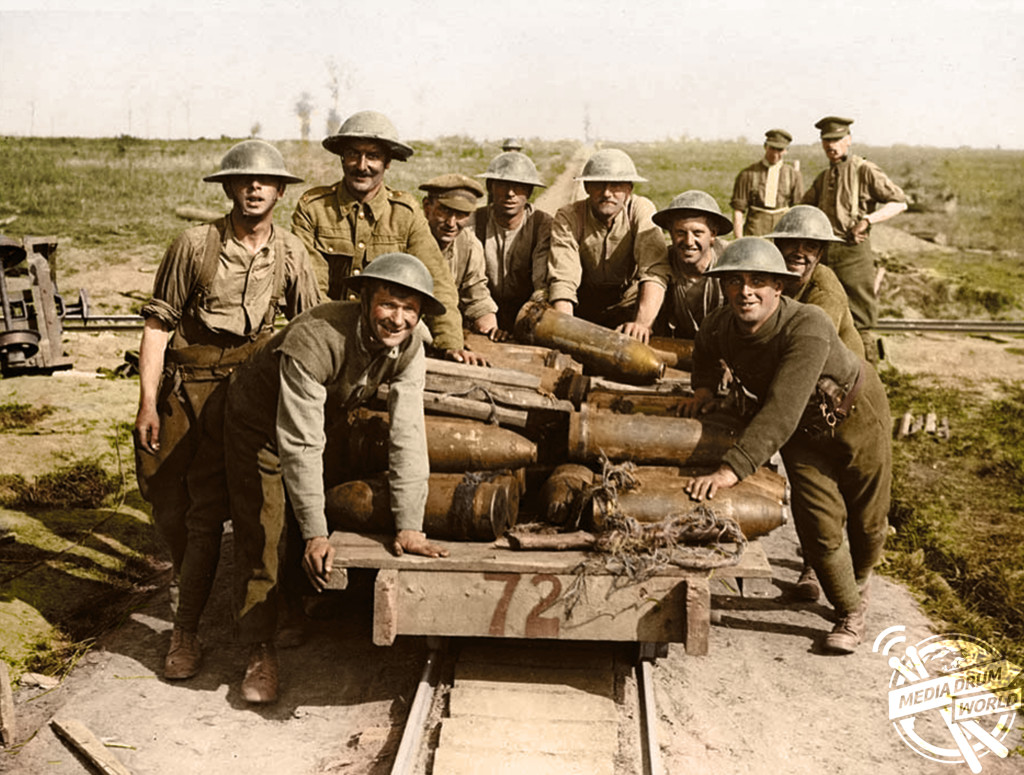
“I decided to colourise these images as a tribute to the men pictured, because I believe that colour adds another dimension to historic images, and helps modern eyes to connect with the subjects more than with a black and white photo,” he said.
“I have found that black and white images are too often sadly ignored, especially by younger generations, and by colourising the photos I hope that more people will stop to learn more about the subjects and what the men went through 100 years ago.”
The Battle of Passchendaele became famous not only for the sheer number of casualties, but also for the horrendous fighting conditions the men were forced to endure.
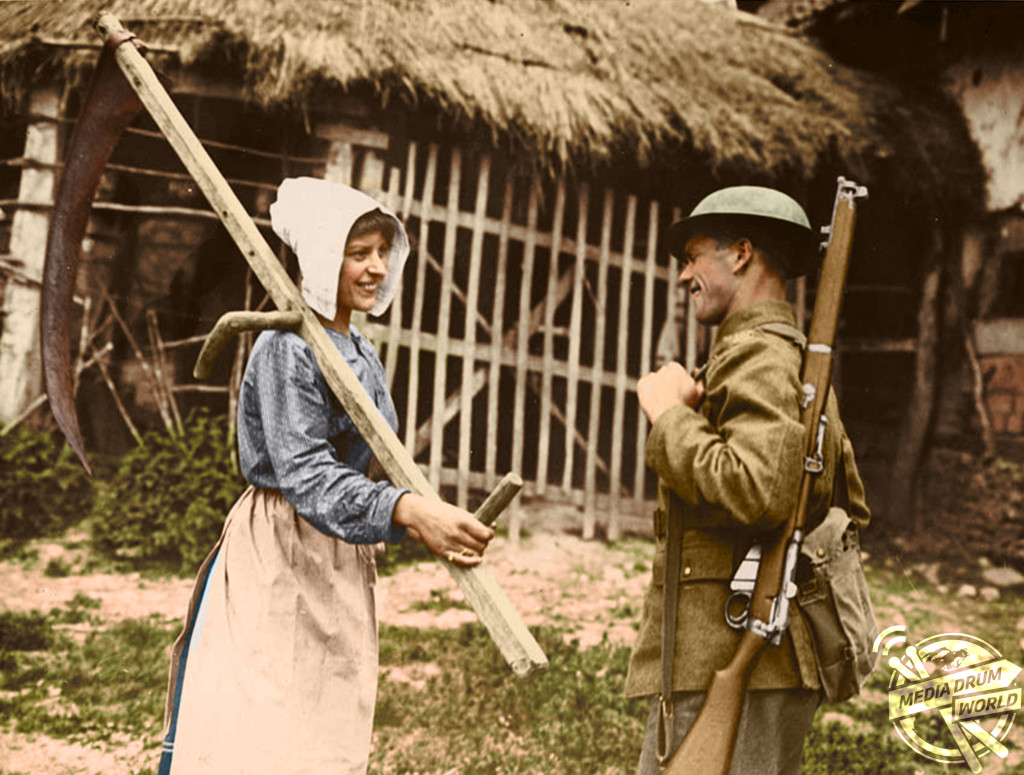
British general Douglas Haig had long wanted the allies to launch an offensive on German positions in Flanders fields. His aim was to break through their lines and reach the Belgian coast, where the Germans had a significant base of submarines Haig hoped to immobilise.
So, on July 31, after two weeks of sustained shelling which had seen more than 4.5 million shells dropped on German positions, the allies launched their infantry attack.
But the plan was a disaster from the get-go. The only significant impact of the shelling offensive had been to destroy drainage systems and churn up the already soft clay soil, meaning the battlefield was susceptible to any adverse weather conditions. Within a few days of the launch of the infantry offensive, some of the heaviest rains for 30 years had turned the battlefield into a quagmire, trapping thousands of men and horses and making it impossible to effectively operate any military equipment.
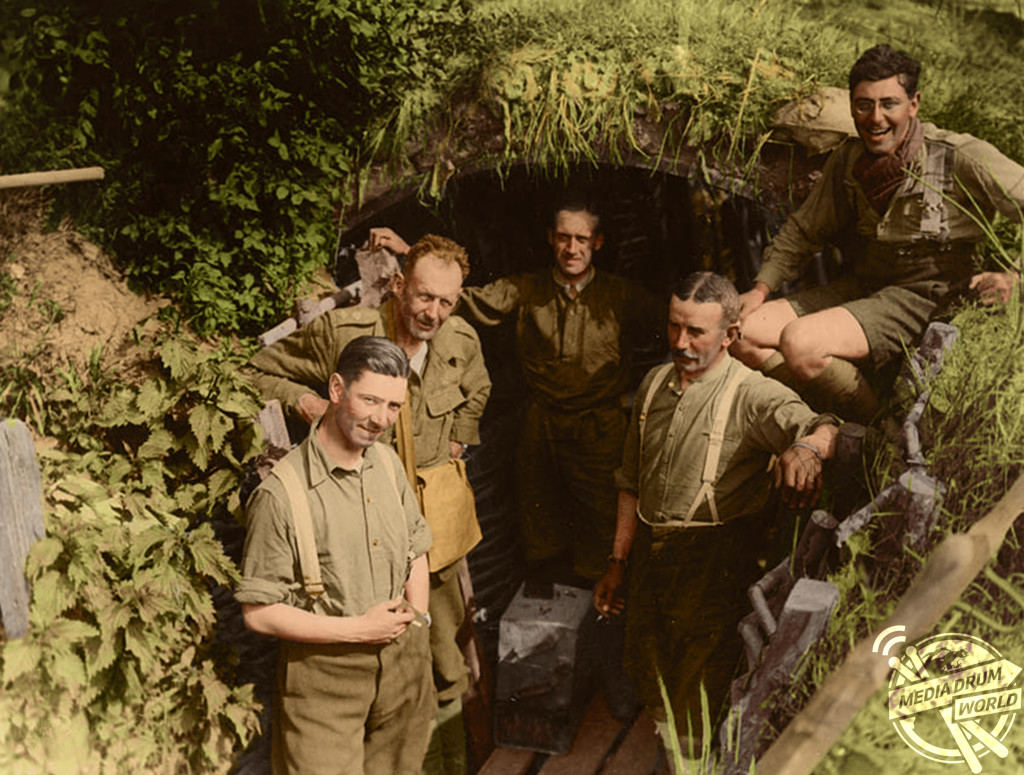
The attack resumed on August 16 but to little effect, with the inclement weather making any meaningful military manoeuvres nearly impossible. The two sides remained at a stalemate until September 20, when an upturn in the weather allowed allied forces to win three key battles at Menin Road Ridge, Polygon Wood and Broodseinde in the space of two weeks.
These victories eventually led to British and Canadian forces taking what was left of the village of Passchendaele on November 6, but the capture came at a heavy price.
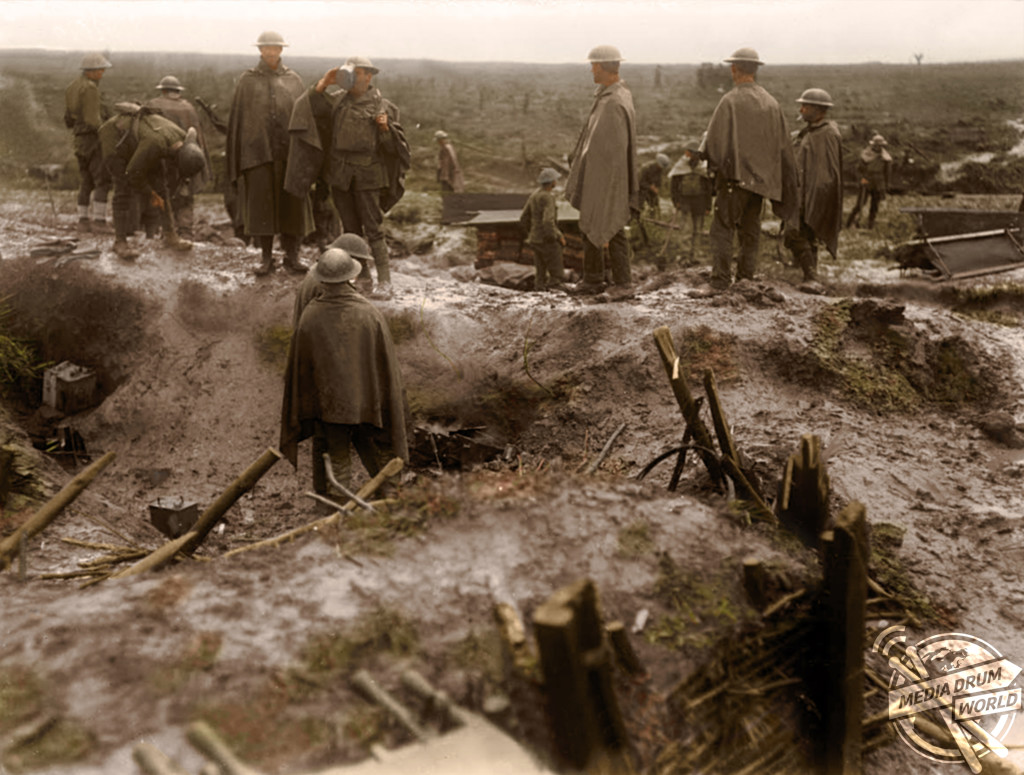
There were an estimated 325,000 allied casualties during the Battle of Passchendaele, with a further 260,000 German casualties making it one of the bloodiest battles of the First World War.
Most people agreed at the time it was launched that the offensive was a good idea, with the allies more able to sustain casualties than the Germans after America’s entry into the war, but there was much controversy over General Haig’s decision to continue the attack into November.
